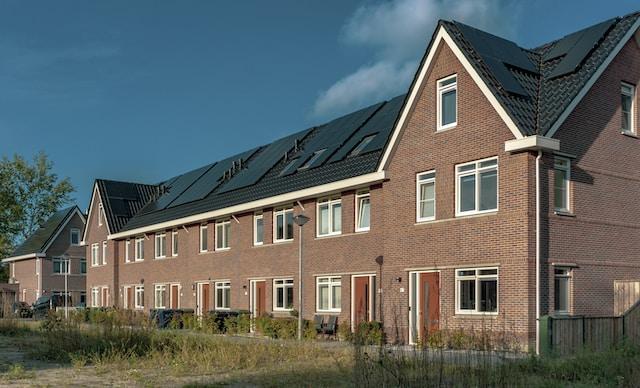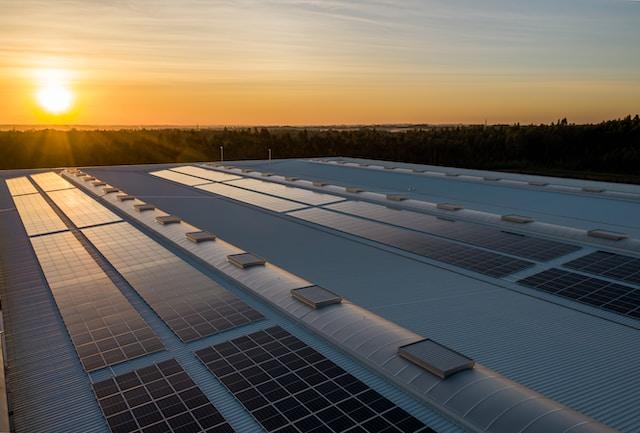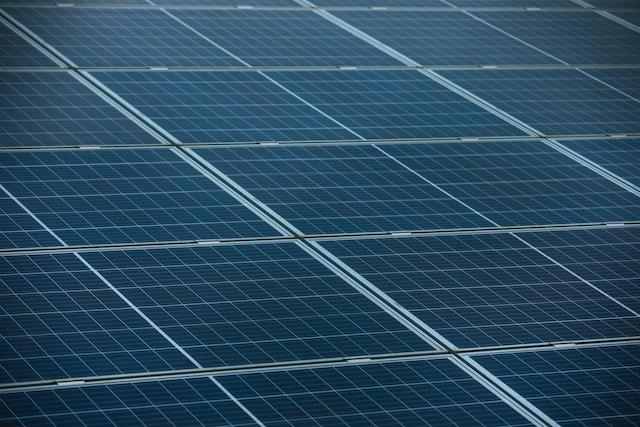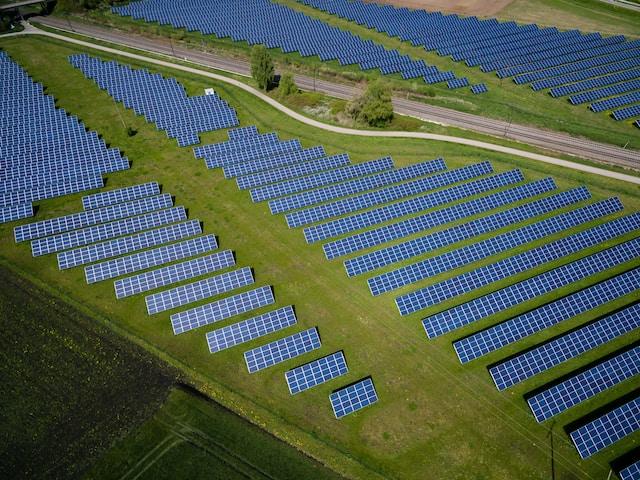
The Ultimate Guide to Understanding Solar Panel Costs in 2023
Introduction
In today's world, the importance of solar energy has become increasingly evident as we face the growing challenges of climate change and our reliance on fossil fuels. With the rise in global awareness and the need for sustainable solutions, renewable energy sources, such as solar power, have gained significant traction among homeowners, businesses, and governments alike. Solar energy provides an abundant, clean, and reliable source of power, helping to reduce our carbon footprint, minimize air pollution, and contribute to a greener, more sustainable future. As interest in renewable energy continues to grow, understanding solar panel costs and the factors that influence them is crucial for potential adopters. The cost of solar panels can be affected by several factors, including the type and efficiency of the panels, system size and capacity, labor and installation expenses, geographic location, local incentives, and additional components. Over the years, the average cost of solar panels has experienced a steady decline, thanks to technological advancements, economies of scale, and increased competition in the market. This article will provide a comprehensive guide on the various factors affecting solar panel costs, average prices in 2023, how to maximize your solar investment, and the long-term benefits of adopting solar energy as a sustainable power source for your home or business.
Factors Affecting Solar Panel Costs
When considering the cost of solar panels, several factors come into play, making it essential to understand each element before making an informed decision. First and foremost, the type of solar panel you choose has a significant impact on the overall cost. There are three main types of solar panels: monocrystalline, polycrystalline, and thin-film. Monocrystalline panels, known for their high efficiency and sleek appearance, tend to be the most expensive option. Polycrystalline panels, while slightly less efficient, offer a more affordable choice without compromising too much on performance. Thin-film panels are the least expensive and most flexible but are also the least efficient, making them a suitable option for specific applications or when space constraints aren't a concern. Another crucial factor affecting solar panel costs is the system size and capacity, with residential and commercial systems differing in scale and price. Residential solar systems usually range from 3 to 10 kilowatts (kW), whereas commercial systems can reach up to 100 kW or more. The larger the system, the higher the cost; however, economies of scale may lead to lower costs per watt for more extensive systems. Labor and installation costs also contribute significantly to the overall expenses, varying based on the complexity of the installation and the contractor's rates. It's essential to obtain multiple quotes from reputable installers to ensure a fair and competitive price. Geographic location and local incentives can greatly influence solar panel costs as well. Federal and state tax credits, rebates, and grants can significantly reduce the upfront expenses associated with solar panel installation. It's vital to research the incentives available in your area, as they can potentially save you thousands of dollars. In the United States, the federal solar tax credit, also known as the Investment Tax Credit (ITC), is a prominent incentive that allows homeowners and businesses to deduct a percentage of their solar installation costs from their federal taxes. Lastly, additional components and accessories must be considered when calculating solar panel costs. Inverters, which convert the direct current (DC) produced by solar panels into alternating current (AC) for use in your home or business, can vary in price depending on their type and efficiency. Mounting systems, which secure solar panels to your roof or the ground, also add to the overall cost, as do batteries and energy storage systems if you choose to store excess solar power for later use. In summary, the cost of solar panels is influenced by several factors, including the type and efficiency of the panels, system size and capacity, labor and installation costs, geographic location, local incentives, and additional components and accessories. By understanding each of these factors, potential solar panel adopters can make well-informed decisions and maximize their investment in this renewable energy source.
Average Solar Panel Costs in 2023
In 2023, the average solar panel costs continue to experience a steady decline due to technological advancements, economies of scale, and increased market competition. However, prices can vary significantly depending on the type of solar panel, system size and capacity, installation and labor costs, and additional components. Understanding these factors can help potential solar energy adopters make well-informed decisions and maximize their investments. Starting with solar panel types, the price range differs based on efficiency and manufacturing complexity. Monocrystalline panels, recognized for their high efficiency and sleek design, typically range from $1.00 to $1.50 per watt. Polycrystalline panels, which offer slightly lower efficiency, are more affordable and generally cost between $0.80 and $1.20 per watt. Thin-film panels, the least expensive and least efficient option, can cost as low as $0.60 per watt, making them attractive for specific applications or when space constraints are not an issue. When examining solar panel costs based on system size and capacity, residential systems (ranging from 3 to 10 kilowatts) can cost between $15,000 and $40,000 before incentives, while commercial systems (ranging up to 100 kilowatts or more) can reach $100,000 or higher. However, larger systems often have lower costs per watt, and available incentives can dramatically reduce the net cost. Installation and labor costs are also significant factors affecting the overall price of a solar panel system. These expenses can vary based on the complexity of the installation, the contractor's rates, and regional labor costs. Typically, installation and labor can account for 10% to 30% of the total system cost. To ensure a fair and competitive price, it's crucial to obtain multiple quotes from reputable installers in your area. Lastly, the cost of additional components can also impact your solar panel expenses. Inverters, which convert the direct current (DC) generated by solar panels into alternating current (AC) for use in your home or business, can range from $1,000 to $3,000 depending on their type and efficiency. Mounting systems can add another $1,000 to $5,000, depending on the type and complexity of the setup. Batteries and energy storage systems, while optional, can increase the total cost by $5,000 to $15,000 or more, depending on the size and capacity of the storage system. In conclusion, the average solar panel costs in 2023 are influenced by a variety of factors, including the type of solar panel, system size and capacity, installation and labor costs, and additional components. By comprehending these variables, prospective solar panel adopters can make informed decisions and optimize their return on investment in this renewable energy source. Remember that available incentives, rebates, and tax credits can significantly reduce your out-of-pocket expenses, making solar energy even more attractive and cost-effective.
How to Maximize Your Solar Investment
Maximizing your solar investment is crucial for reaping the full benefits of this renewable energy source. By focusing on several key aspects, such as calculating the return on investment (ROI), reducing installation costs, optimizing system efficiency, staying informed about incentives and rebates, and selecting the right solar panel provider, you can ensure that your solar energy system delivers optimal performance and financial returns. First, calculating the ROI of your solar panel system is essential for understanding your potential savings over time. To determine your ROI, consider factors such as your system's upfront costs, energy production, electricity savings, and available incentives. By comparing these factors to your current energy expenses, you can estimate the payback period and long-term savings that solar power can provide. Next, reducing installation costs can significantly improve your solar investment. One option is DIY solar panel installation, which can save on labor costs. However, this approach requires a thorough understanding of electrical systems, local building codes, and proper safety measures. Another option is participating in group-buying programs or solar cooperatives, which allow communities to negotiate better prices for solar installations through collective bargaining. Optimizing system efficiency is vital for maximizing your solar investment. Proper maintenance, such as cleaning solar panels and ensuring that they remain free of debris or shading, can help maintain optimal energy production. Additionally, utilizing smart energy monitoring systems allows you to track your solar panels' performance in real-time, identify potential issues, and optimize energy consumption habits to make the most of your solar-generated power. Staying informed about incentives and rebates is another way to maximize your solar investment. Federal and state tax credits, rebates, and grant programs can significantly reduce the overall cost of your solar panel system. It's essential to research available incentives in your area and understand eligibility requirements to take full advantage of these cost-saving opportunities. Finally, selecting the right solar panel provider is critical for ensuring a successful solar investment. When choosing a provider, consider factors such as product quality, warranty coverage, installation experience, customer reviews, and post-installation support. A reputable solar panel provider will not only offer high-quality products and services but also guide you through the entire installation process and provide ongoing support for the lifespan of your system. In conclusion, maximizing your solar investment involves several key steps, including calculating ROI, reducing installation costs, optimizing system efficiency, staying informed about incentives and rebates, and selecting the right solar panel provider. By focusing on these aspects, you can ensure that your solar energy system delivers optimal performance, financial returns, and contributes to a more sustainable and eco-friendly future.
Conclusion
In conclusion, understanding solar panel costs and the factors that influence them is crucial when considering investing in solar energy. As discussed, the primary factors affecting solar panel costs include the type and efficiency of the panels, system size and capacity, labor and installation expenses, geographic location, local incentives, and additional components. The average costs for solar panels in 2023 have continued to decline, making solar energy more accessible and attractive for homeowners and businesses alike. It's important to emphasize the long-term benefits of solar energy when assessing the overall cost of solar panels. While the initial investment may seem substantial, the potential savings on electricity bills, combined with federal and state incentives, can result in a payback period of only a few years. Furthermore, solar energy systems have an average lifespan of 25-30 years, which translates into decades of clean, renewable energy production and financial savings. Beyond the financial benefits, solar energy also contributes to a more sustainable and environmentally friendly future. By adopting solar power, you are actively reducing your carbon footprint and dependence on fossil fuels, thereby promoting a greener, healthier planet for generations to come. Ultimately, as the world moves towards cleaner and more sustainable energy sources, solar panels represent a worthwhile investment that can provide significant long-term advantages. By understanding the factors that influence solar panel costs, staying informed about available incentives and rebates, and selecting the right solar panel provider, you can maximize your investment and embrace solar energy as a viable, eco-friendly solution. The adoption of solar power not only offers considerable financial benefits but also allows you to contribute to the global effort to combat climate change and create a more sustainable future for all.
Apr 1, 2023
Share:
Fresh off the Press
Continue reading
Newsletter
Your journey towards a sustainable lifestyle starts here!
Join our newsletter for the latest on solar panels and clean energy breakthroughs.






